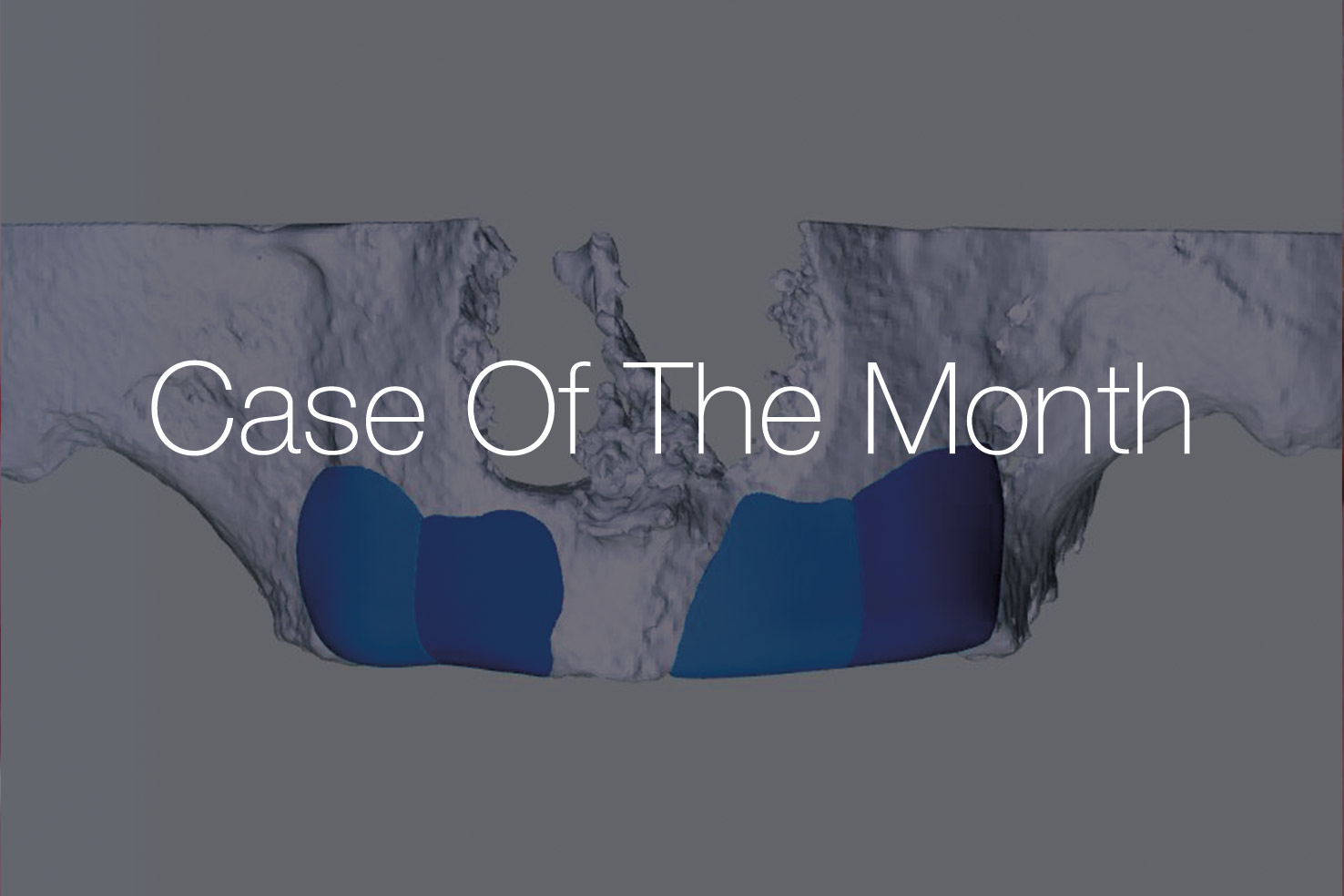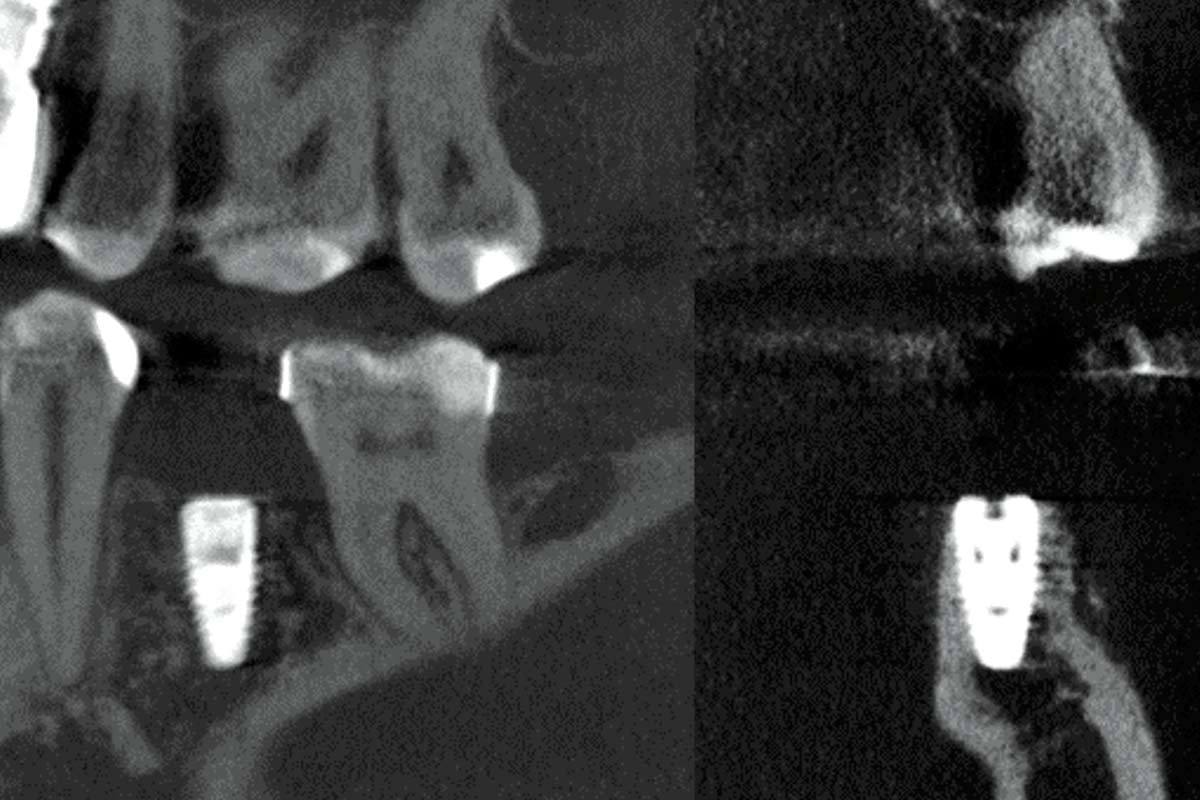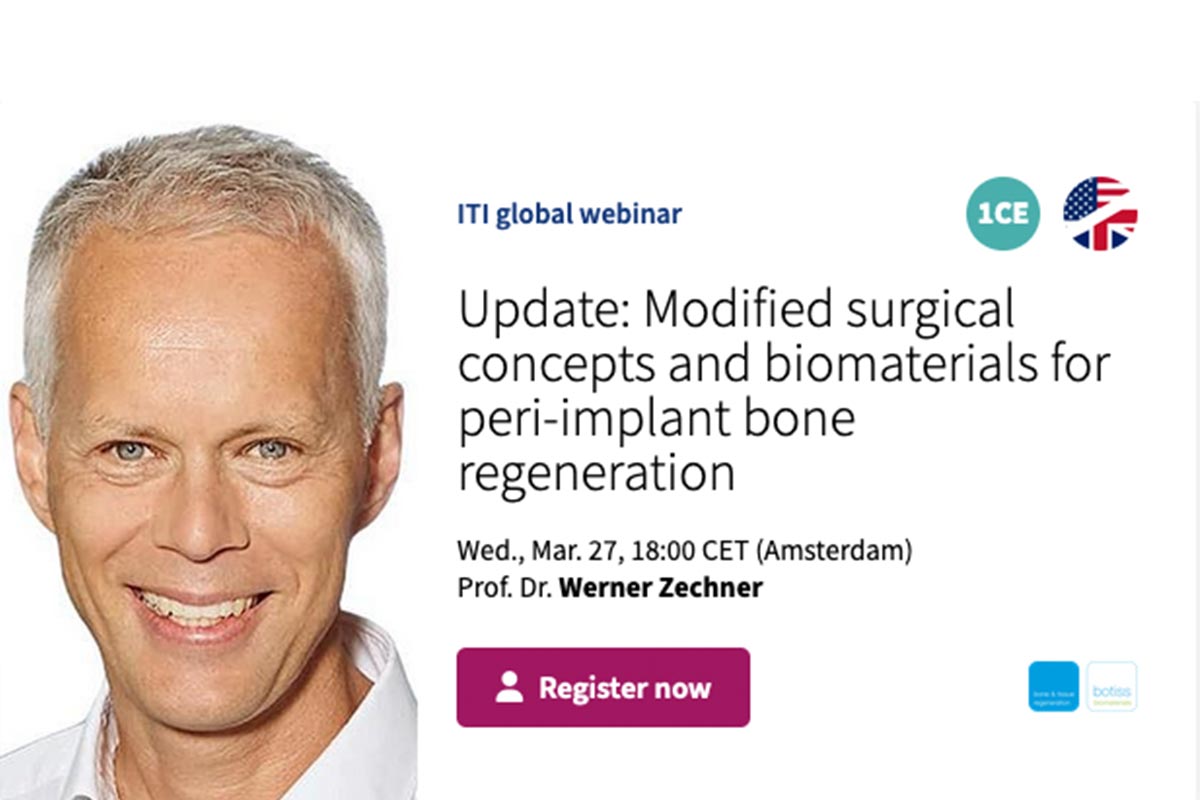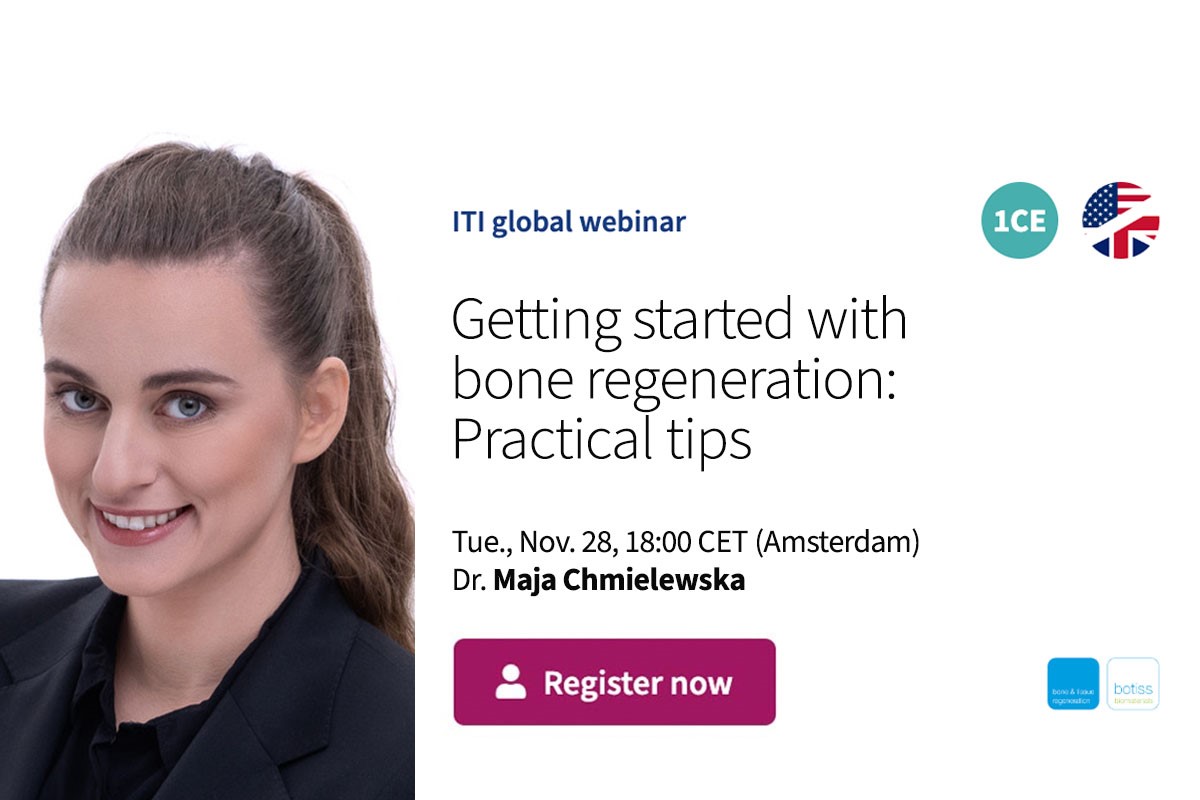Ridge augmentation
Reconstruction of the atrophic jaw bone
The placement of dental implants in a prosthetically driven position requires a certain width and height of the alveolar ridge to achieve an optimal aesthetic outcome and implant survival on the long-term. Depending on the extent of the bone loss and location of the defect different techniques can be chosen.
Application of regenerative techniques
Severe atrophic alveolar ridges with a pronounced vertical deficiency are commonly treated by block grafting, ridge splitting or bone expansion techniques (distraction osteogenesis). For the treatment of less extended horizontal bone defects with a minor vertical component, Guided Bone Regeneration (GBR) has become a well-established therapeutic approach. GBR is a technique used for the regeneration of lost alveolar bone by the help of a grafting material and a barrier membrane.

GBR around implants
treatment of peri-implant bone defects
Peri-implant bone augmentation is required if implants can be placed with primary stability but without sufficient peri-implant bone volume or if a bone loss at previously placed implants has occurred. GBR can be considered the best documented and most widely used method to augment localized alveolar bone defects.
Two-stage GBR
If the ridge anatomy does not allow ideal implant placement due to reduced bone volume, a two-stage procedure is recommended with implant placement as a second step after hard tissue reconstruction. For this purpose, the defect is filled with a bone grafting material that serves as a scaffold for ingrowth of bone forming cells (osteoconduction) and blood vessels, and prevents collapse of the overlying membrane and soft tissue.
Block augmentation
Block augmentation is a technique developed for the reconstruction of the severely resorbed alveolar ridge or for the regeneration of complex defects in a two-stage approach1. Blocks are fixated with osteosynthesis screws and edges should be smoothened with appropriate instruments to avoid soft tissue irritation. An appropriate soft tissue management that allows a tension-free wound closure is of utmost importance.
Bone ring technique
The bone ring technique allows bone augmentation and implantation in a one-stage procedure. The bone ring is placed press-fit into a trephine drill-prepared ring bed, enabling the localized horizontal/vertical bone augmentation. At the same time, an implant is inserted into the ring. The bony integration of both, bone ring and implant, occurs via the surrounding vital bone.
Shell technique
The shell technique enables complex three-dimensional augmentations in case of large bony defects. The concept relies on the preparation of a biological container with the help of a bone plate, which creates the necessary space for the full incorporation of the particulate bone grafting material.
CASES
Science
Education
- Dr. Nenad TanaskovicBosnia and Herzegovina
- Dr. Jochen TunkelGermany
- Dr. Jochen TunkelGermany
Edutainment
Handling
- botiss biomaterialsGermany





























